RARE! WWII 1945 Original World War II “Headquarters of the Commander in Chief - U.S. Pacific Fleet” CONFIDENTIAL Operation Iceberg Okinawa Gunto Invasion Bulletin (Shuri Town and Surrounding Islands)



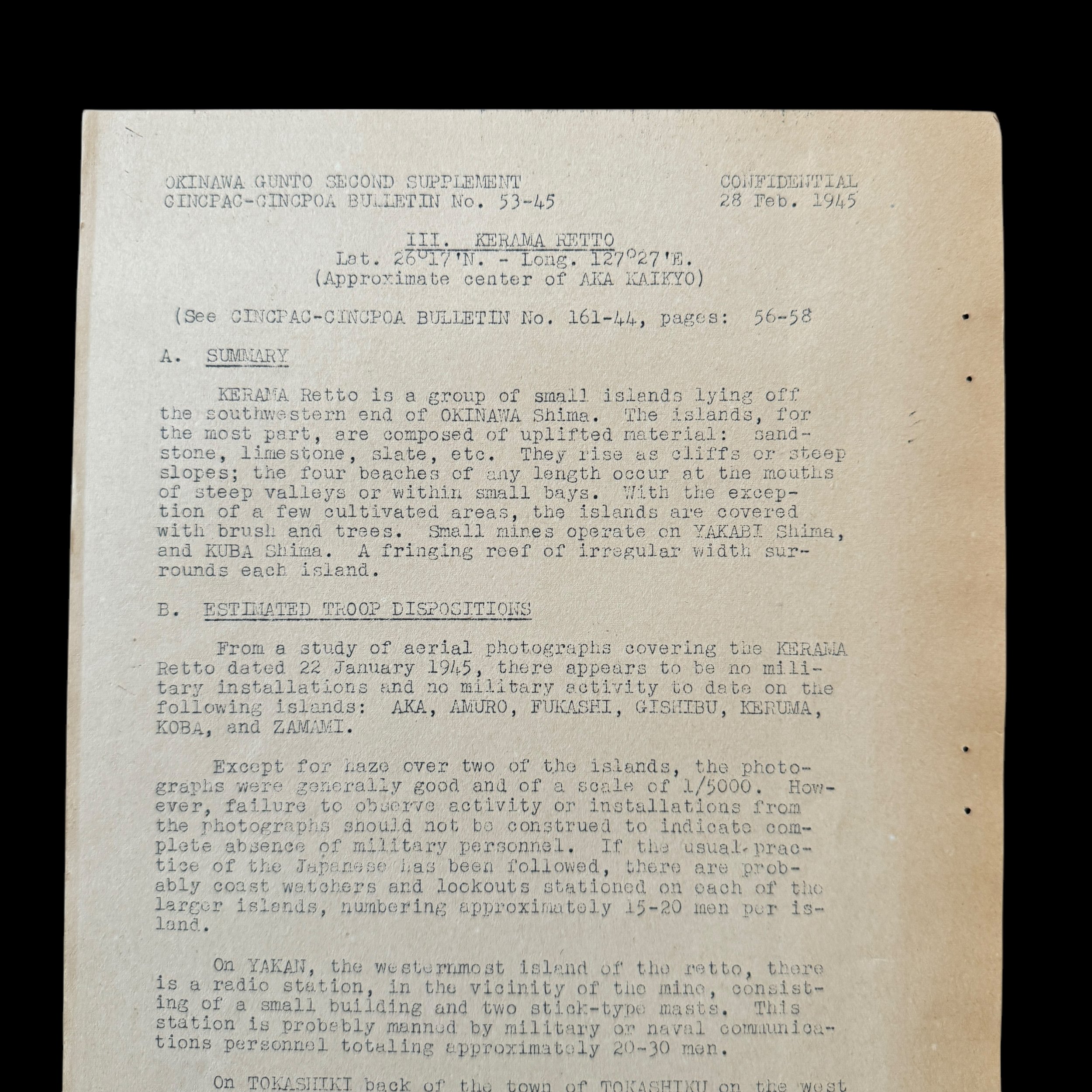

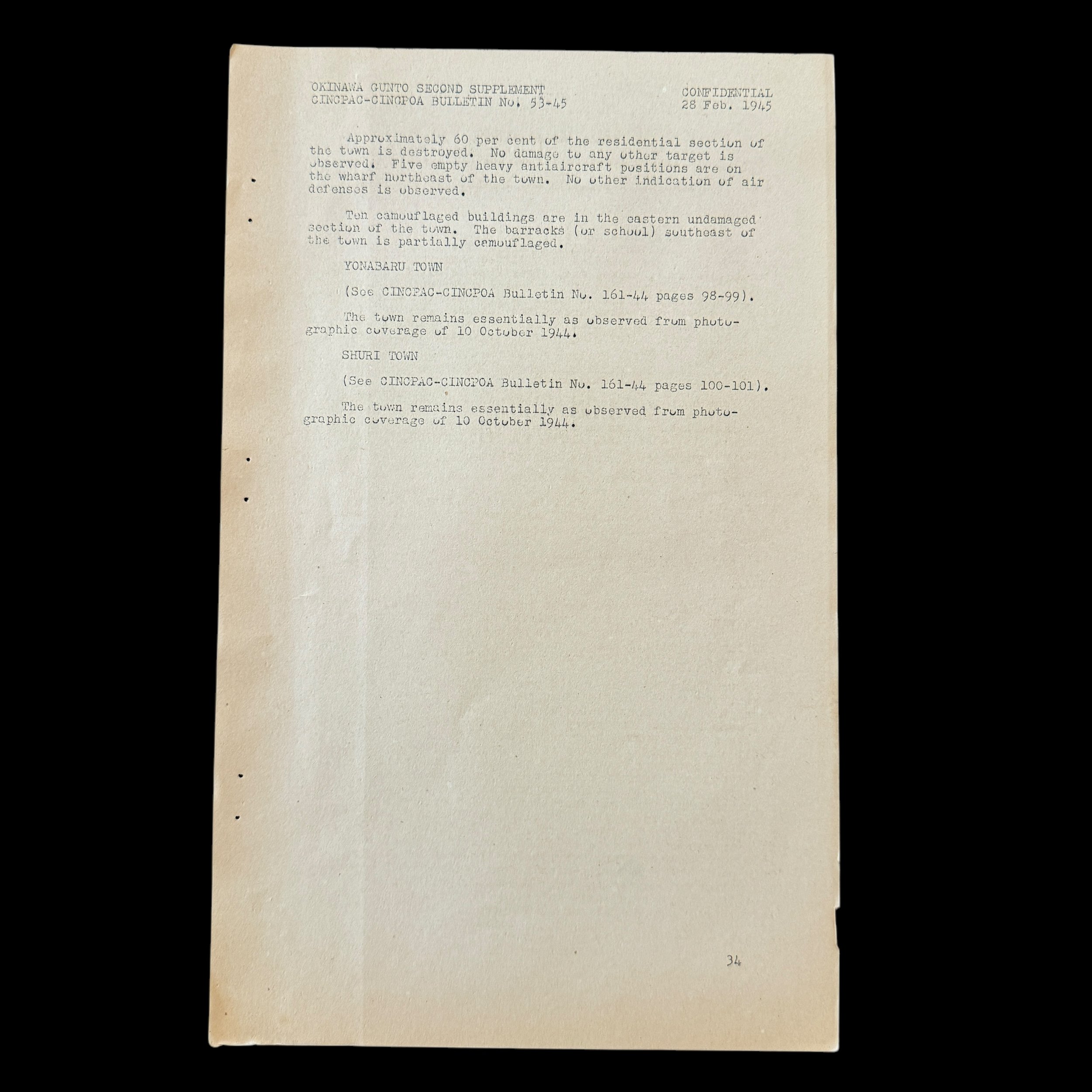
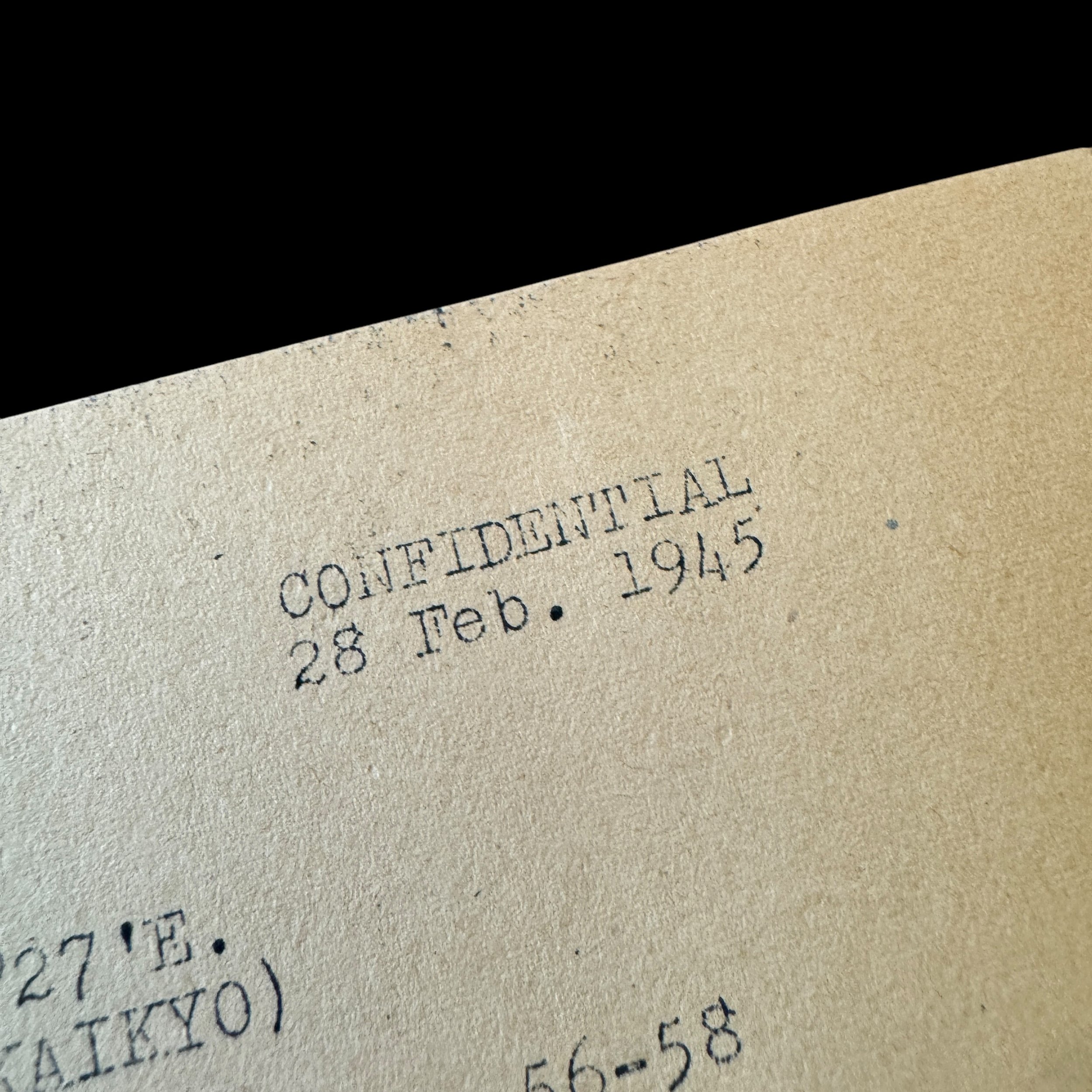
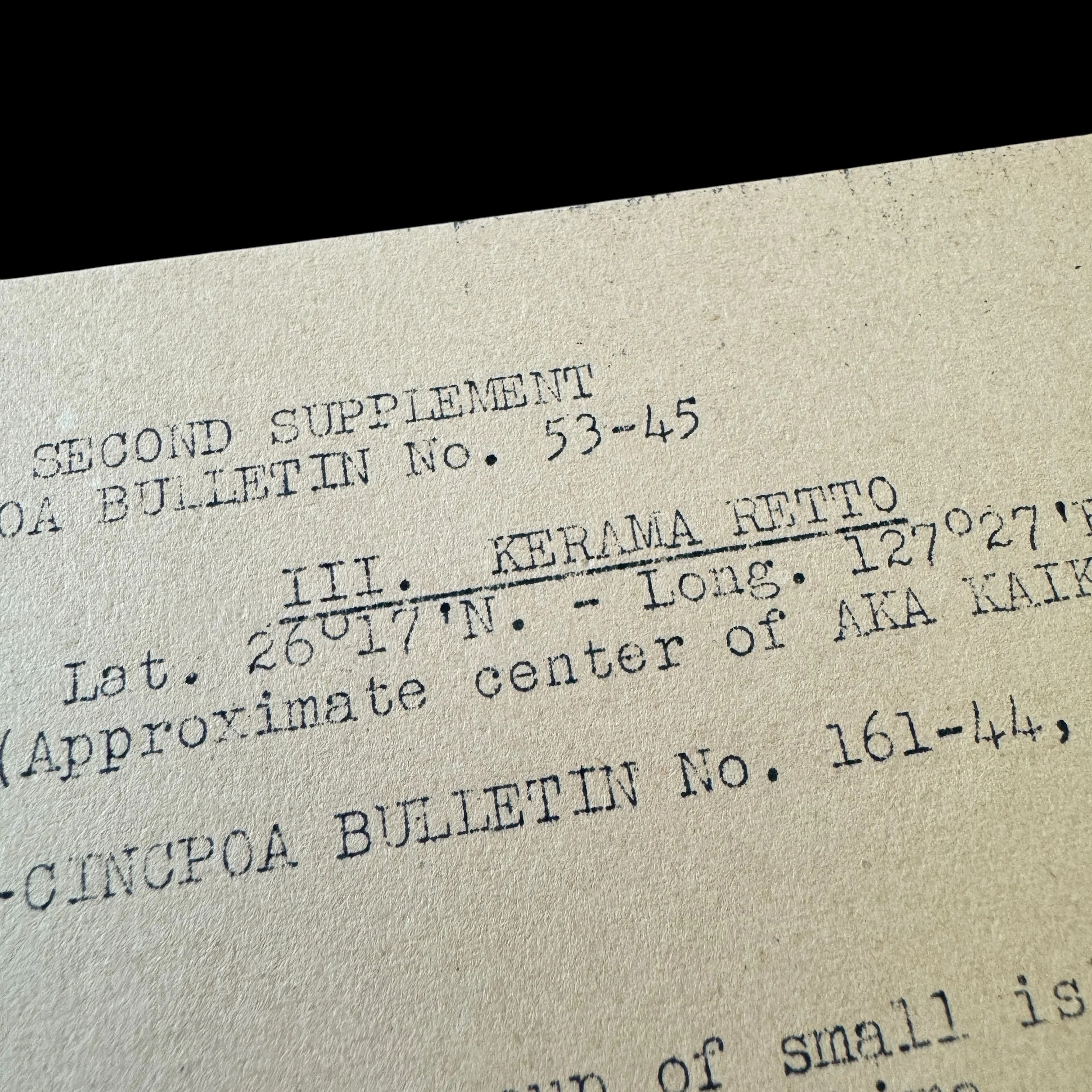
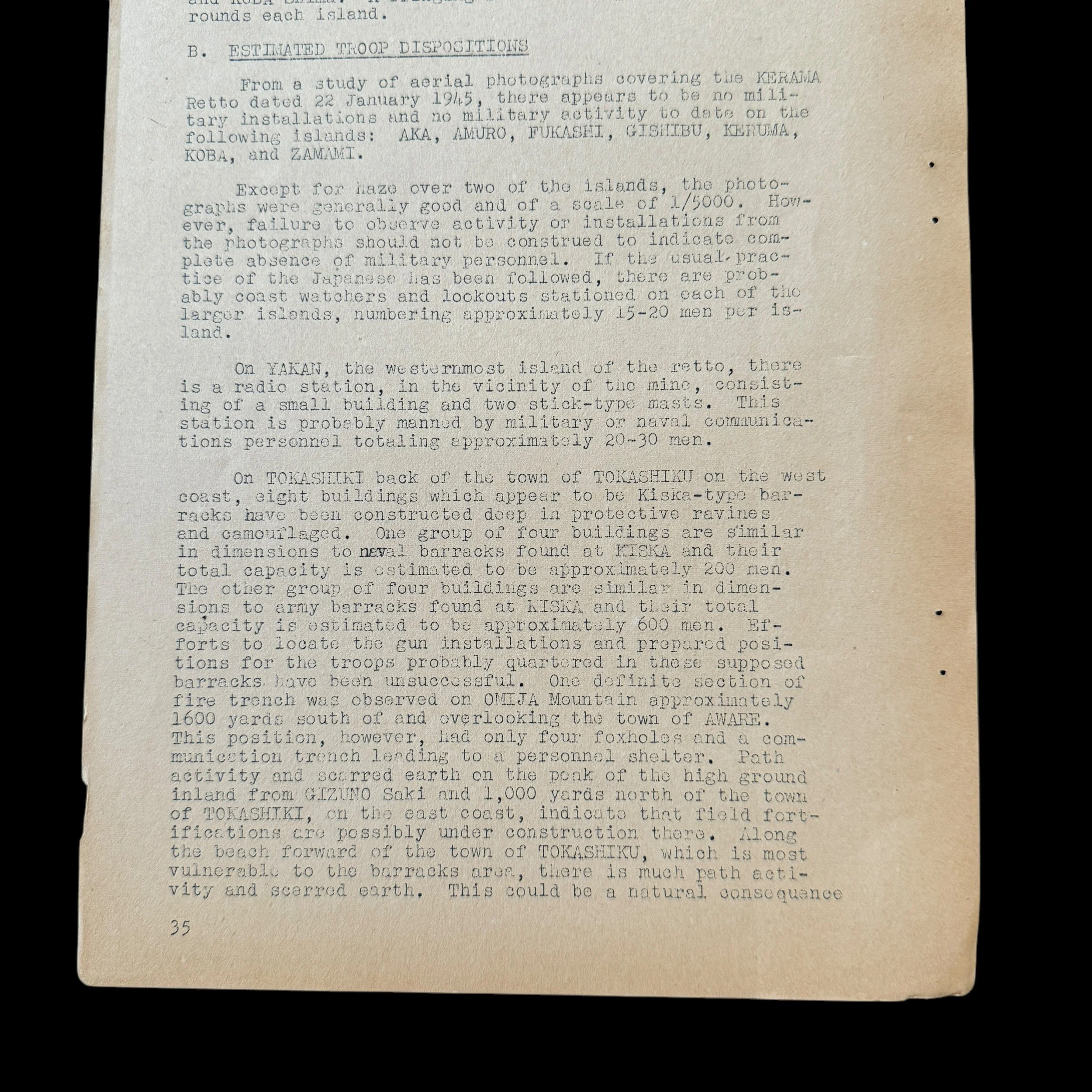
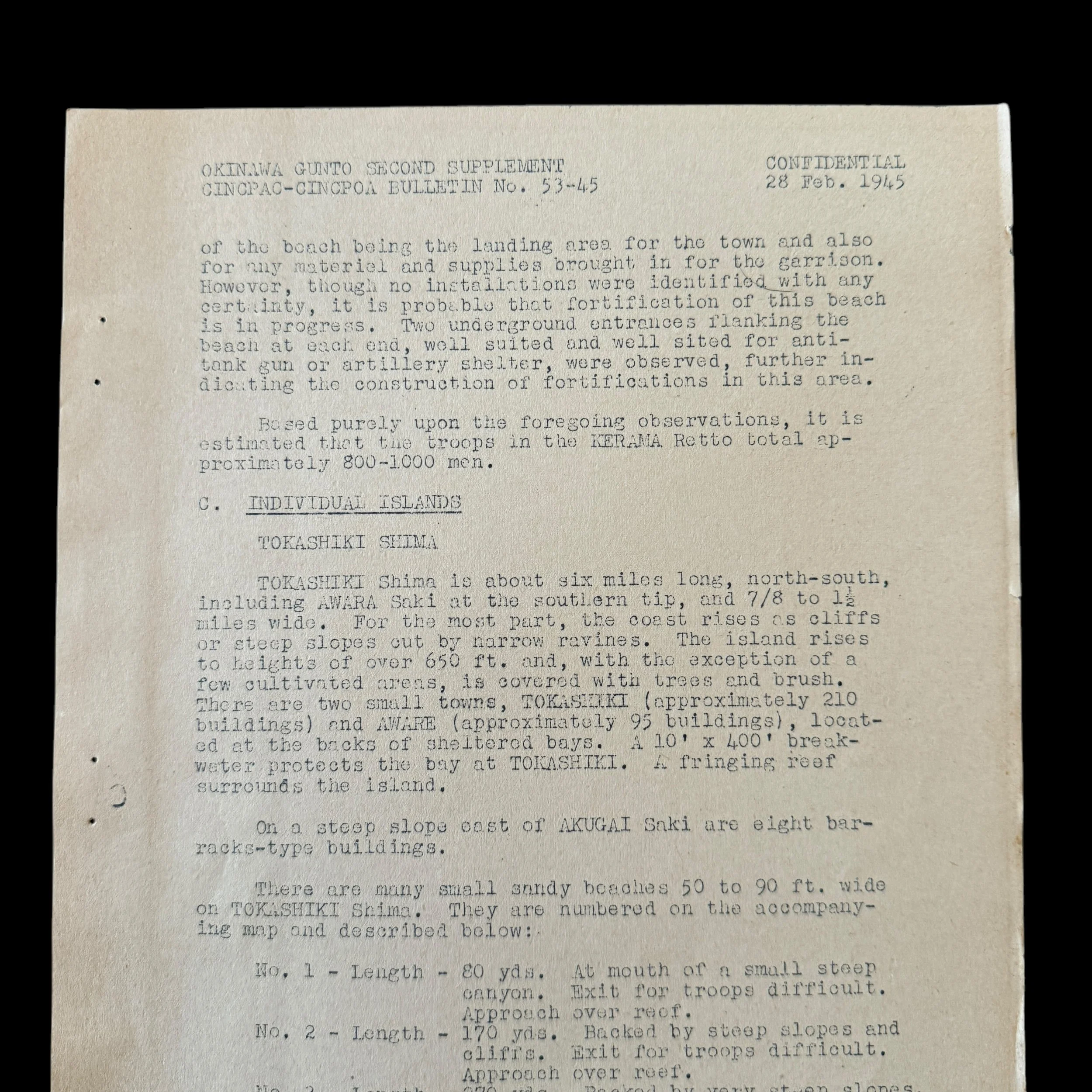
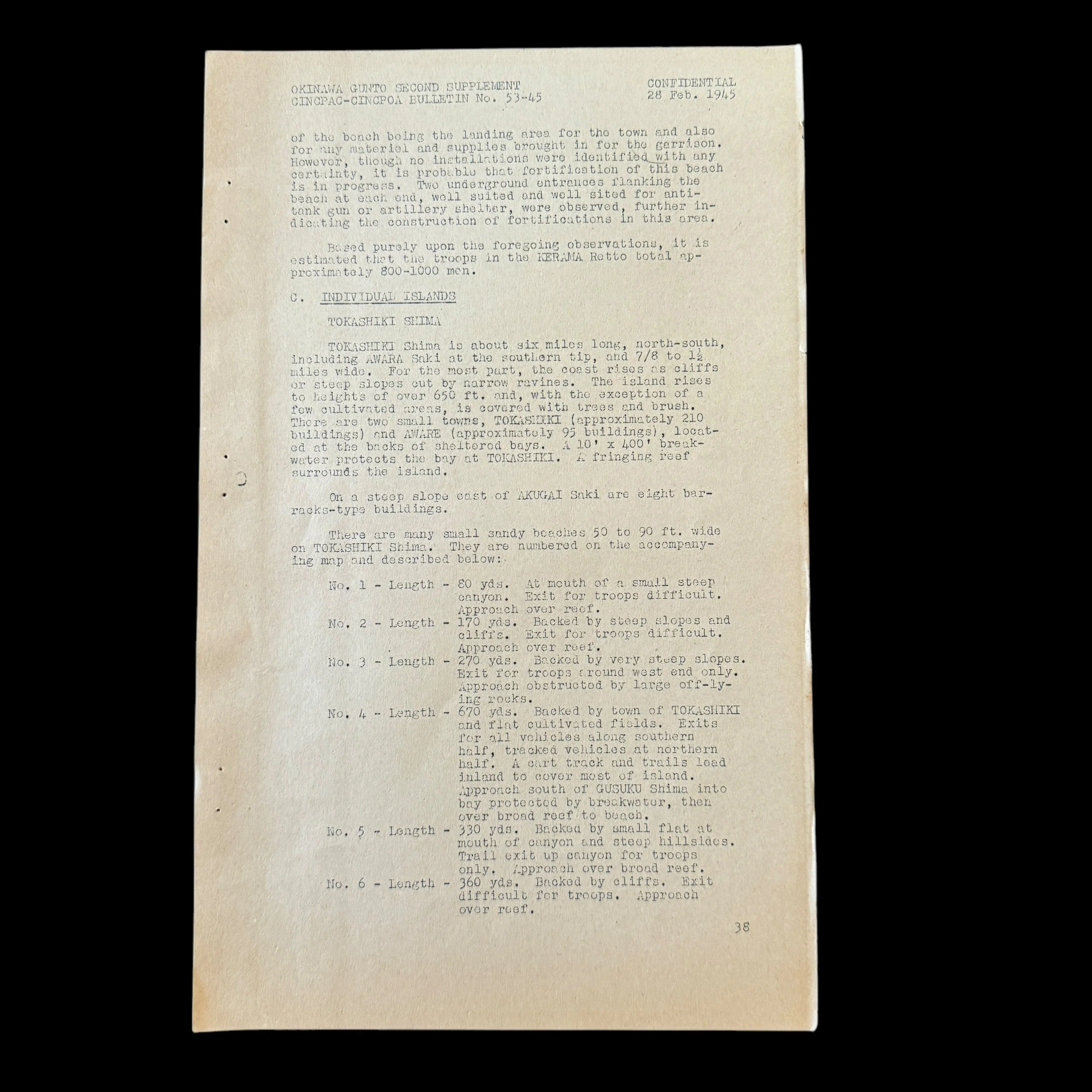
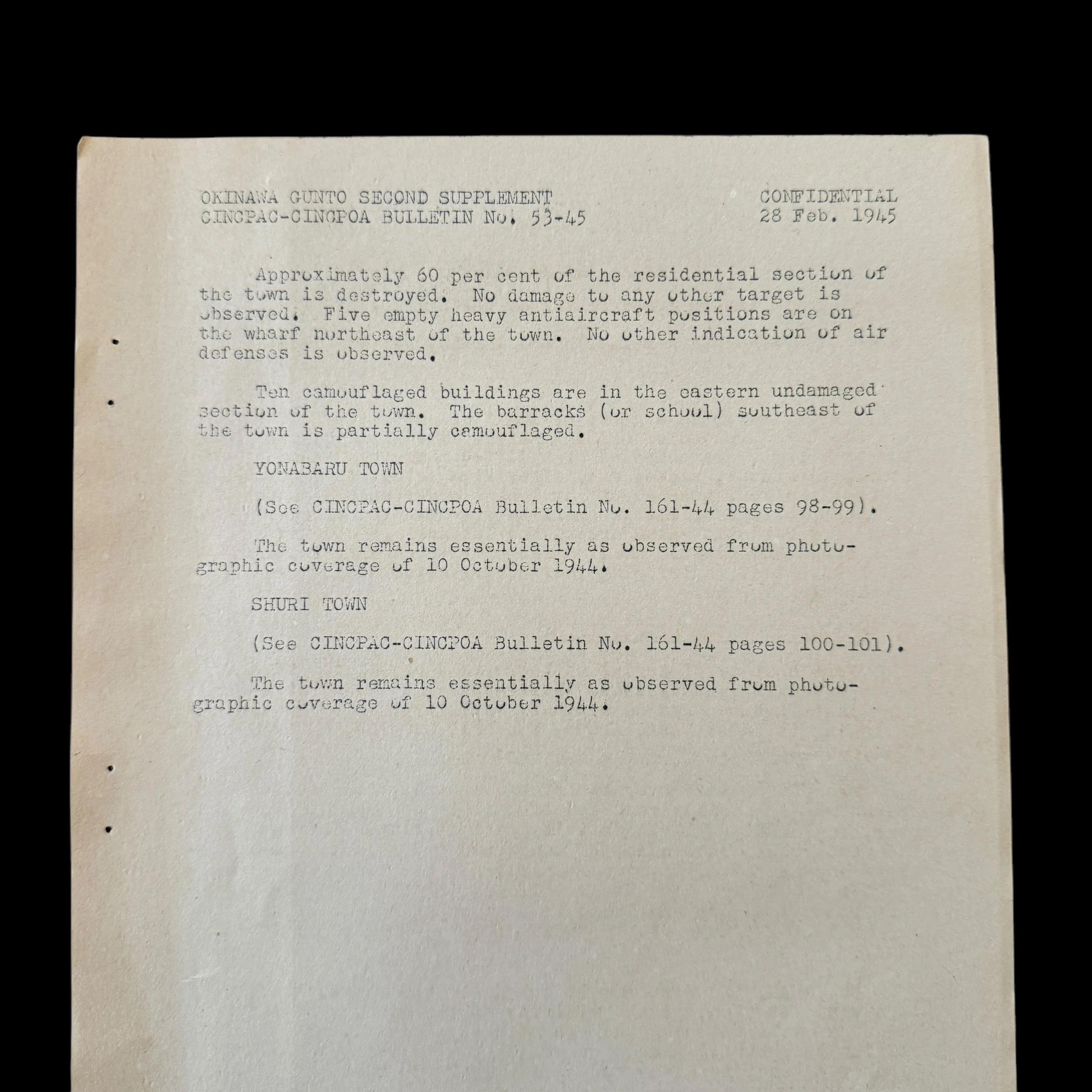
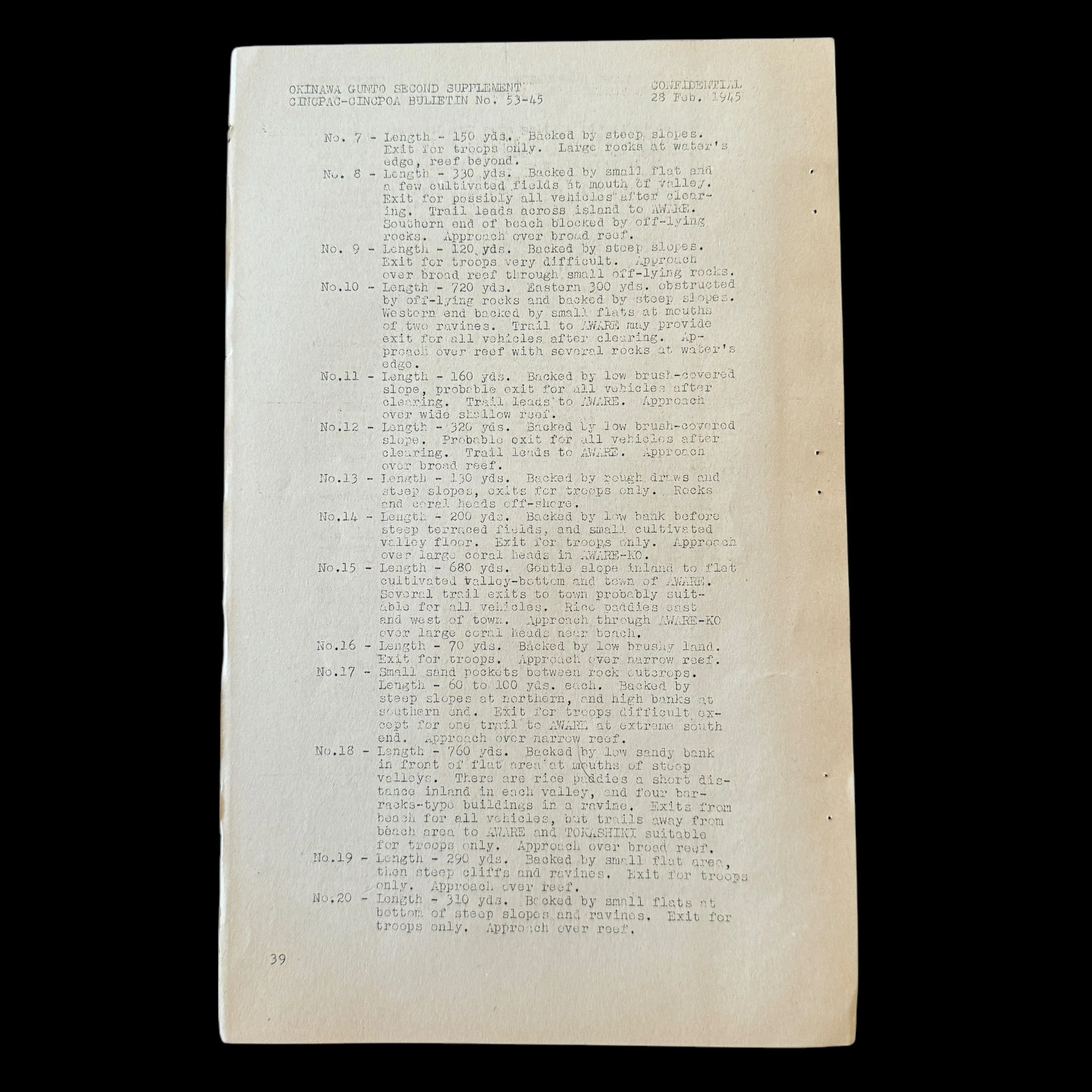
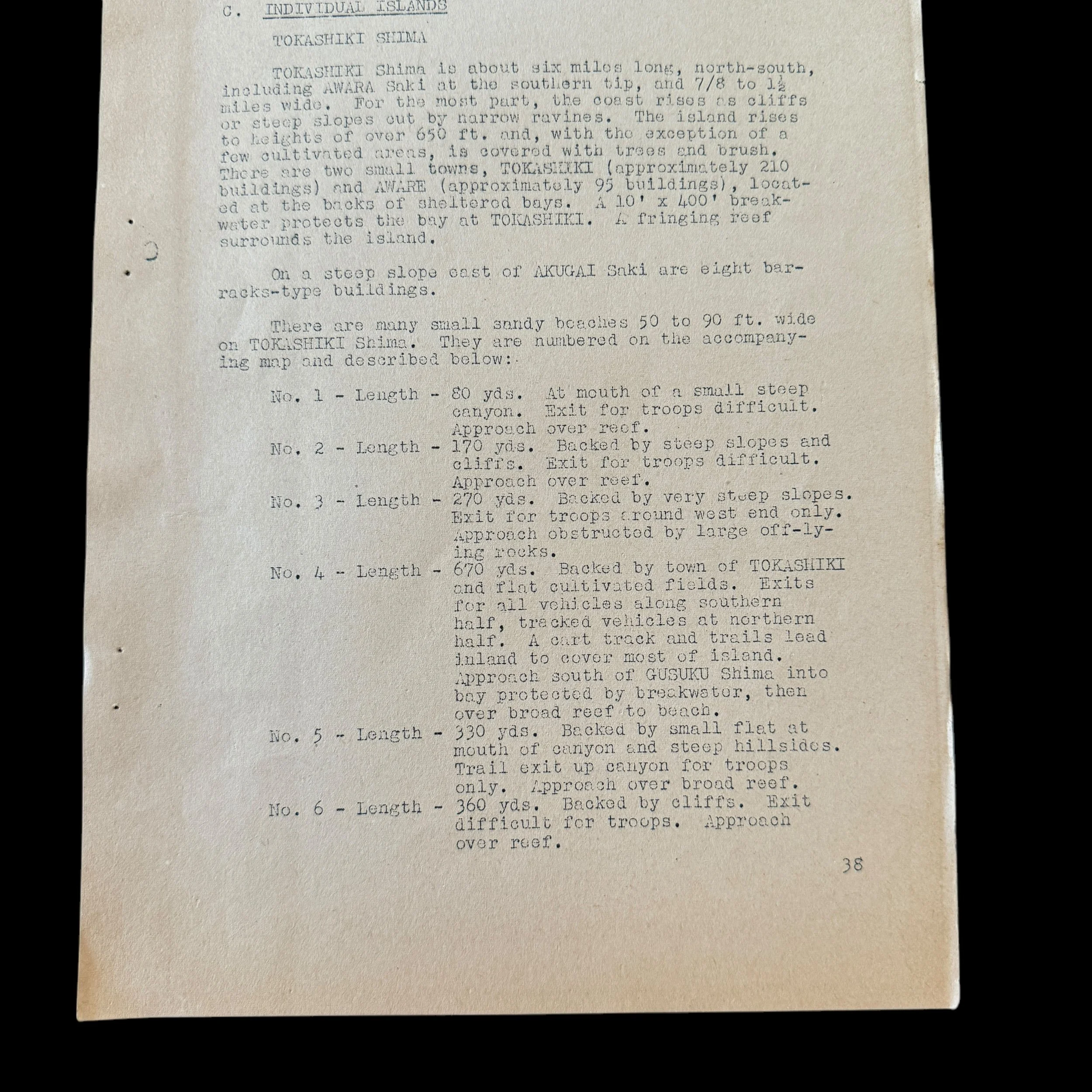
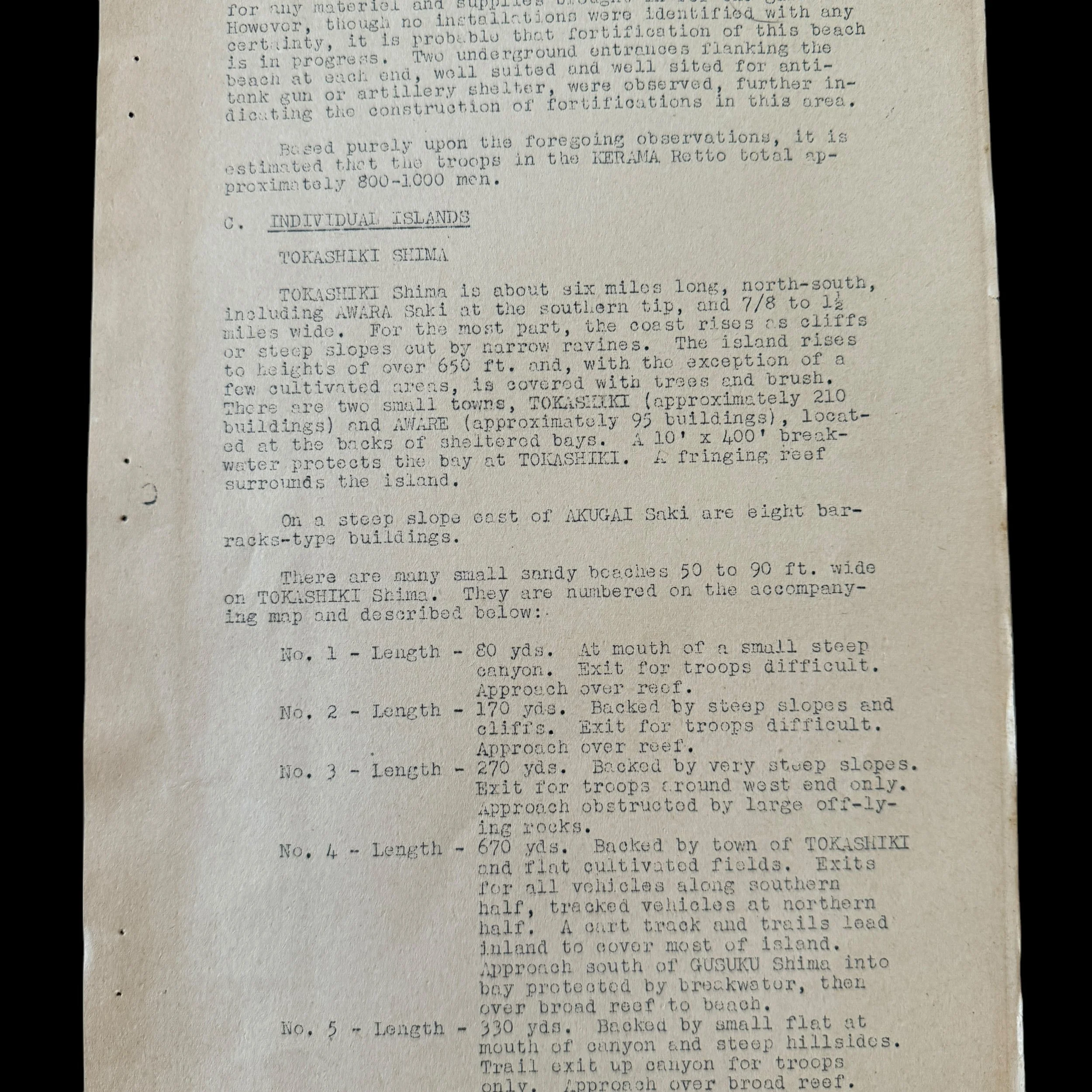
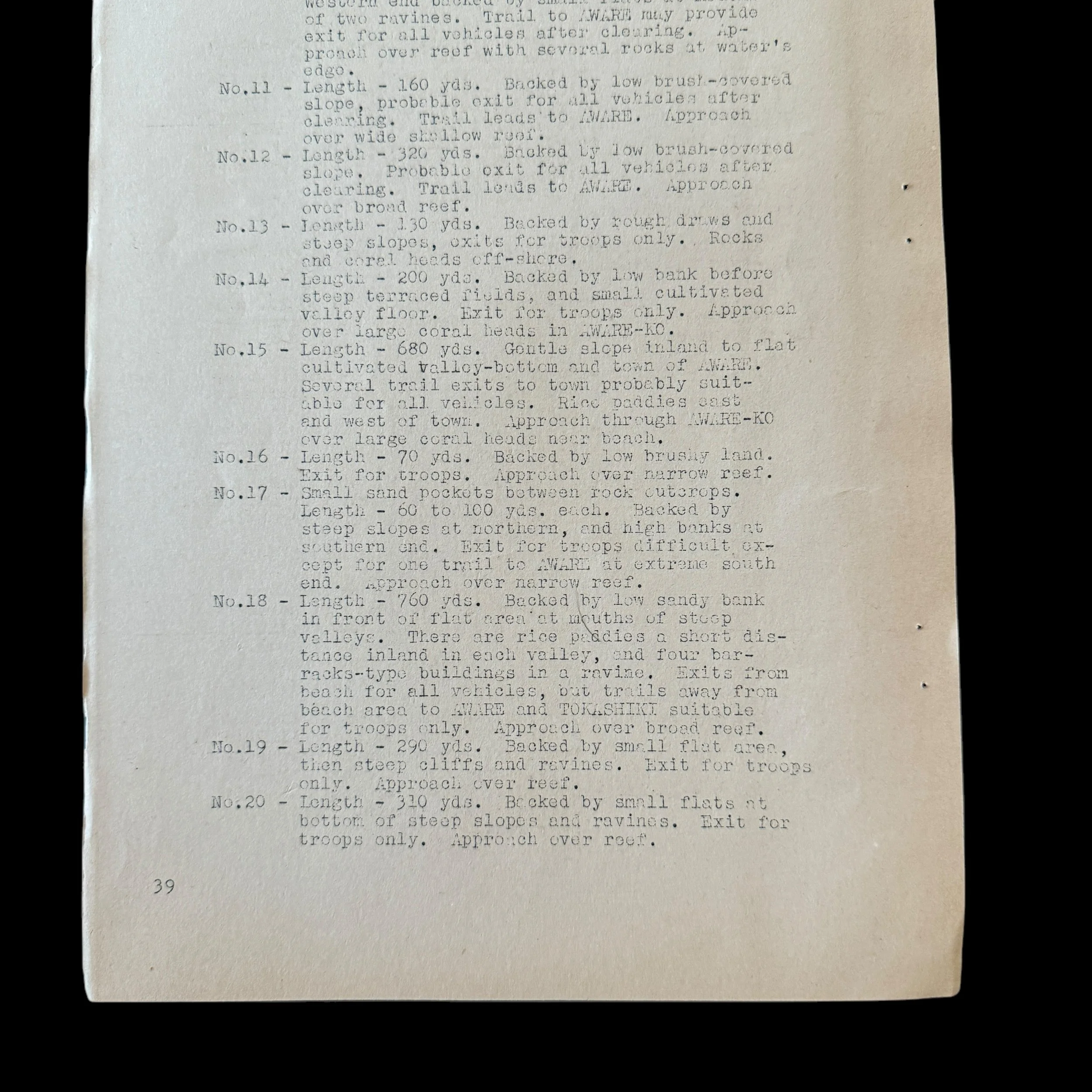
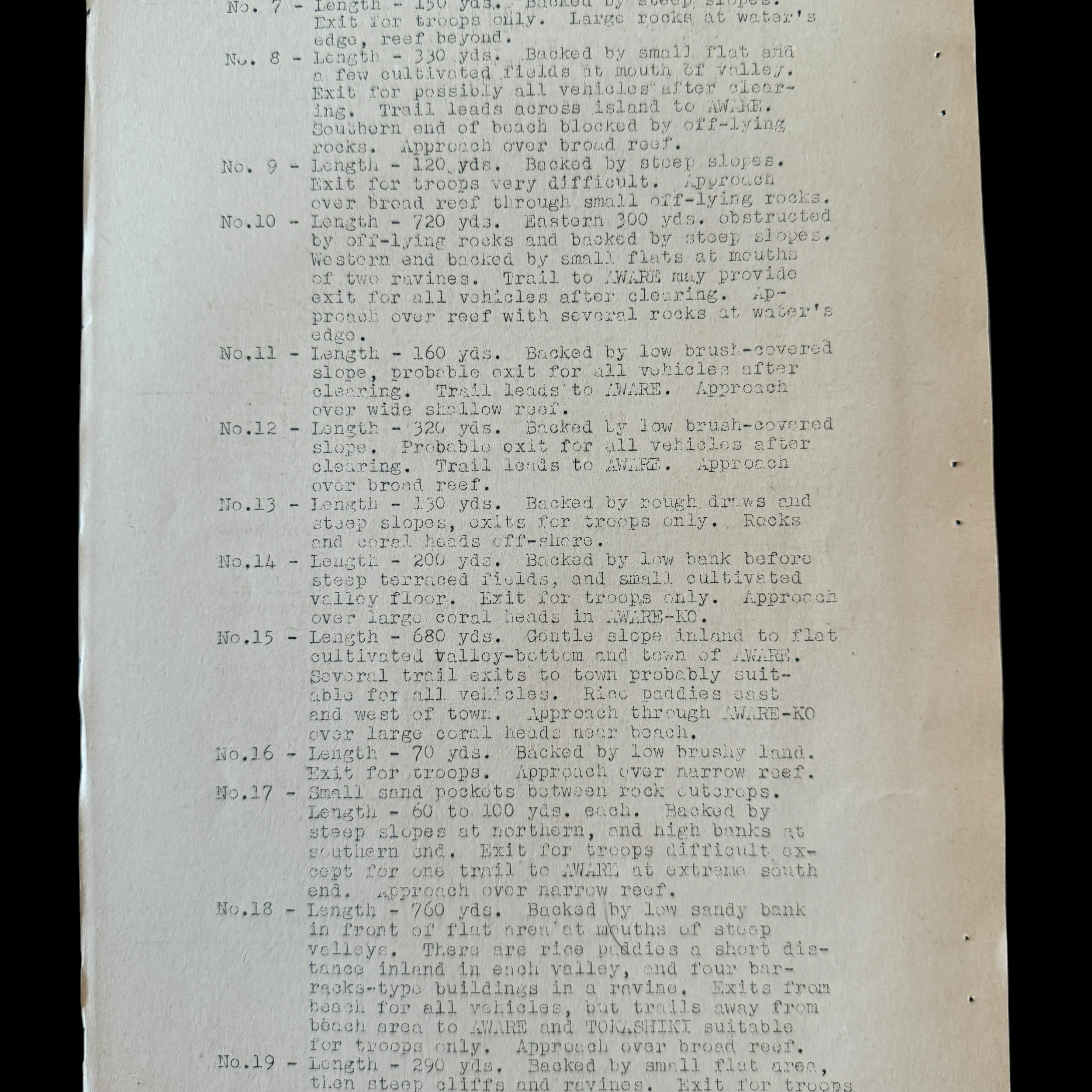

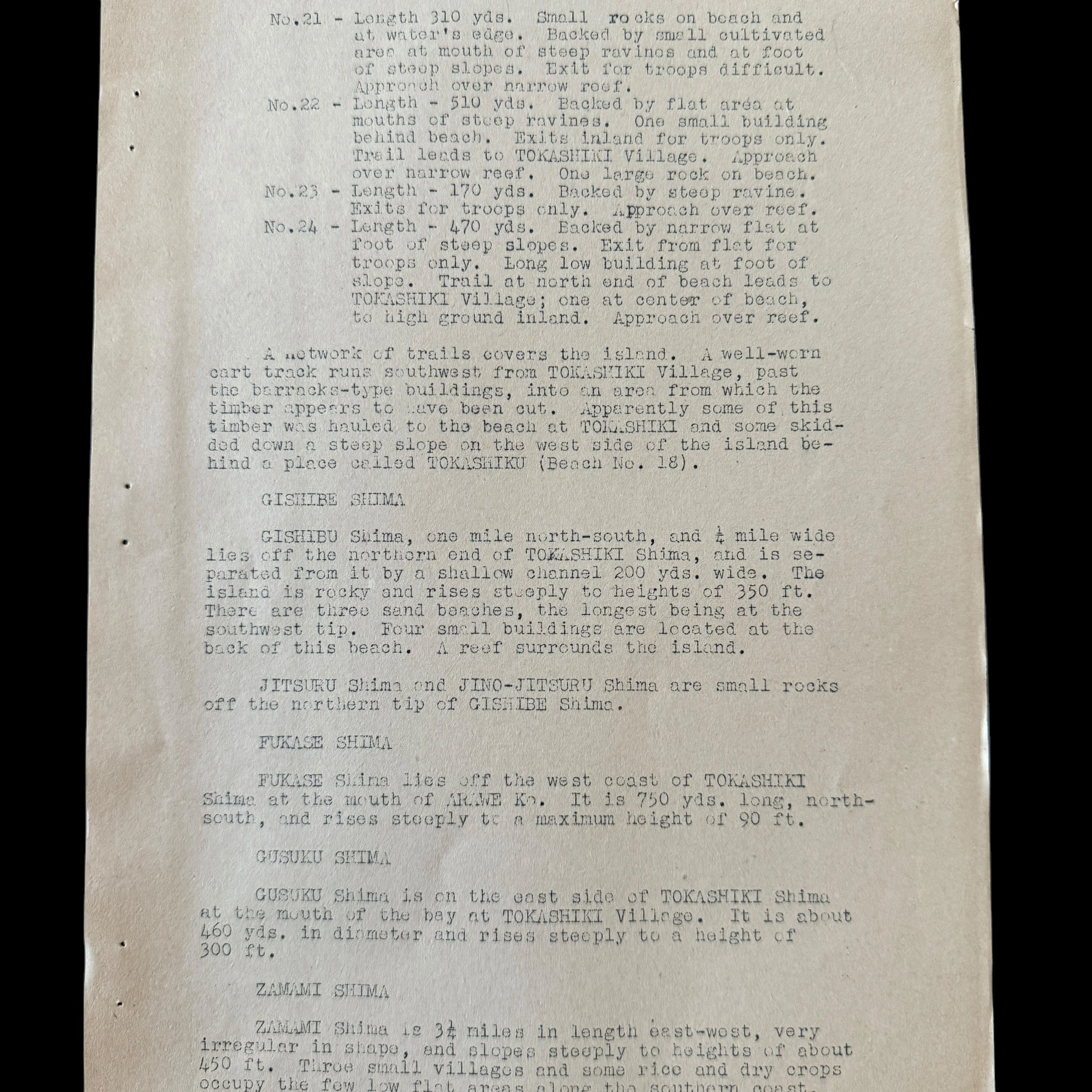
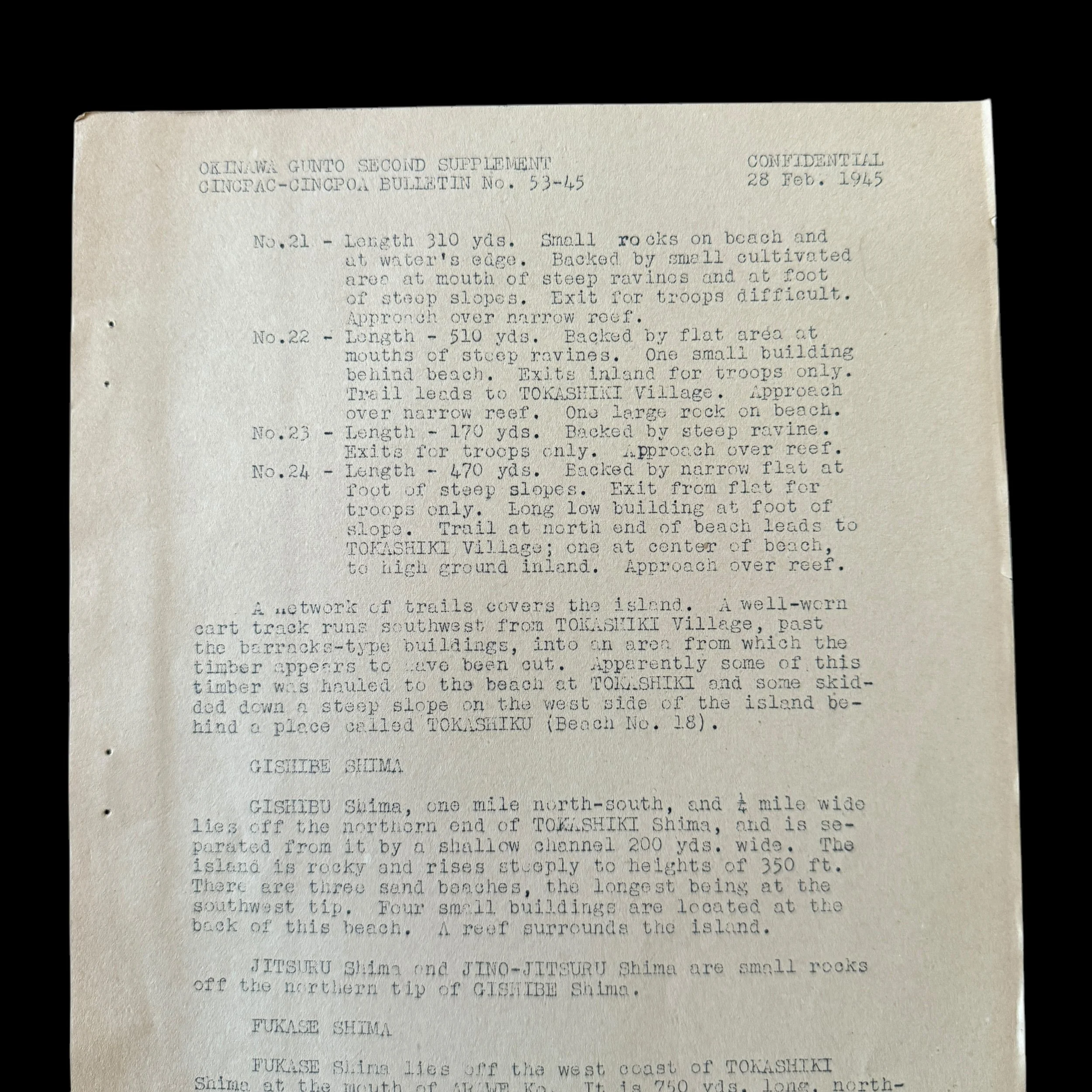

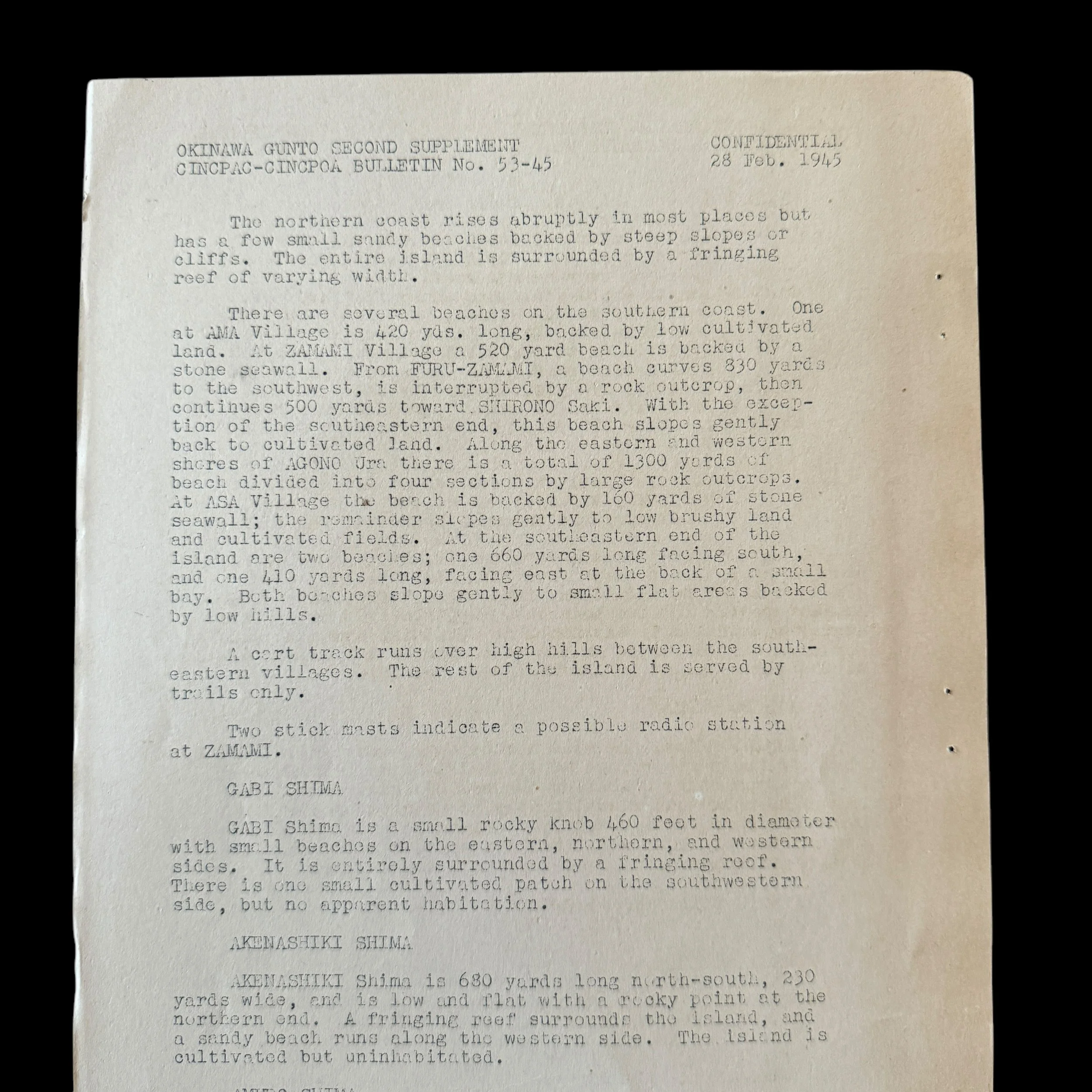



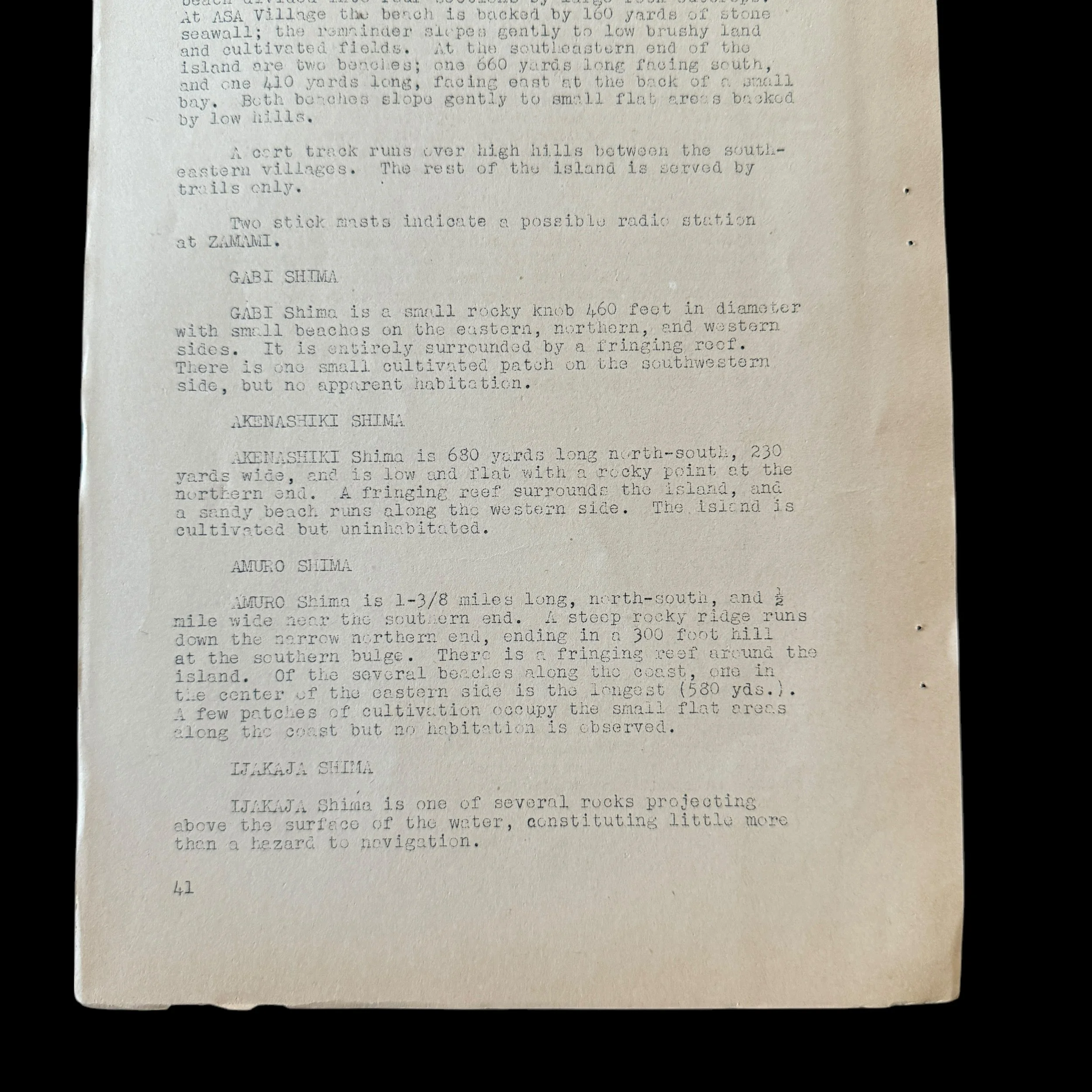
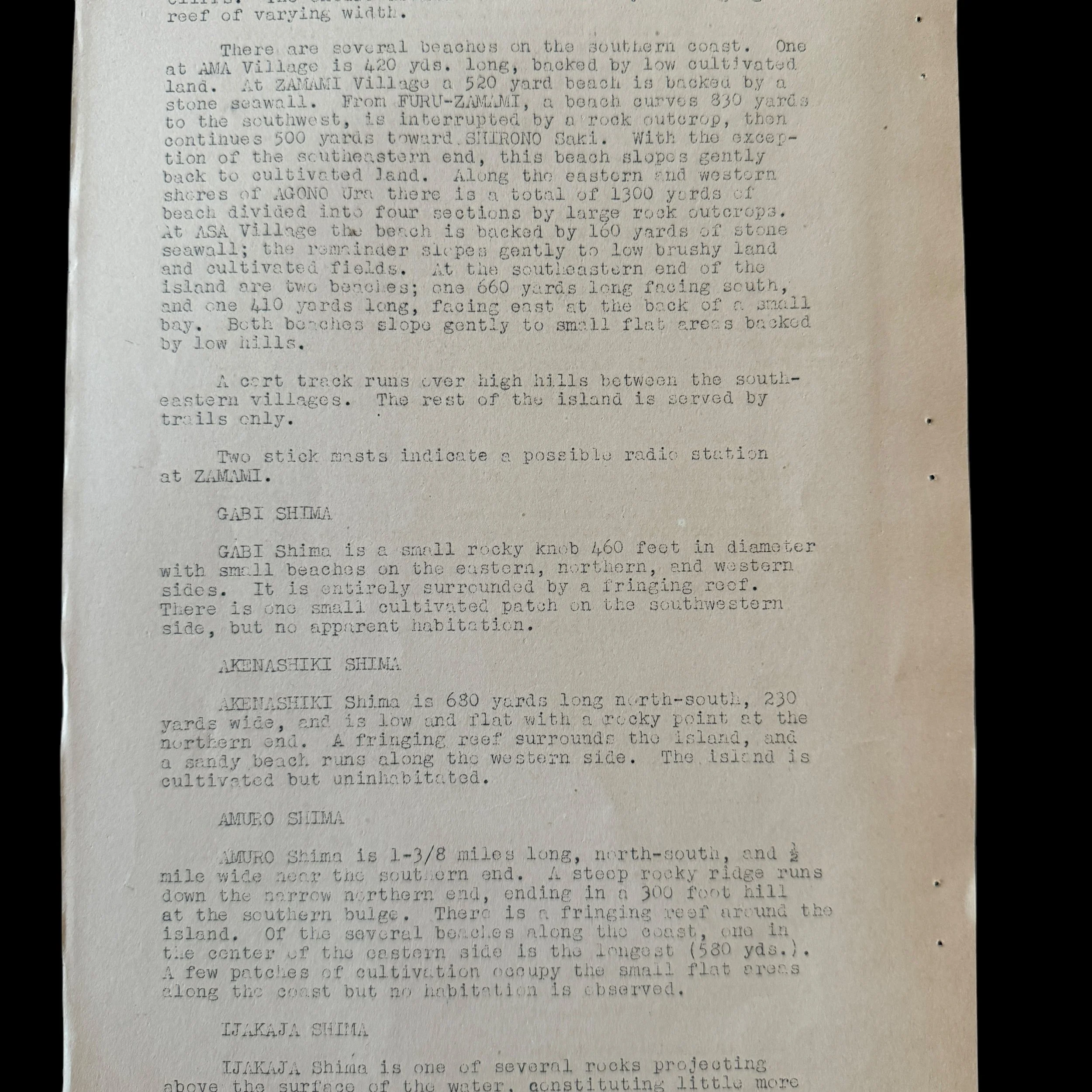

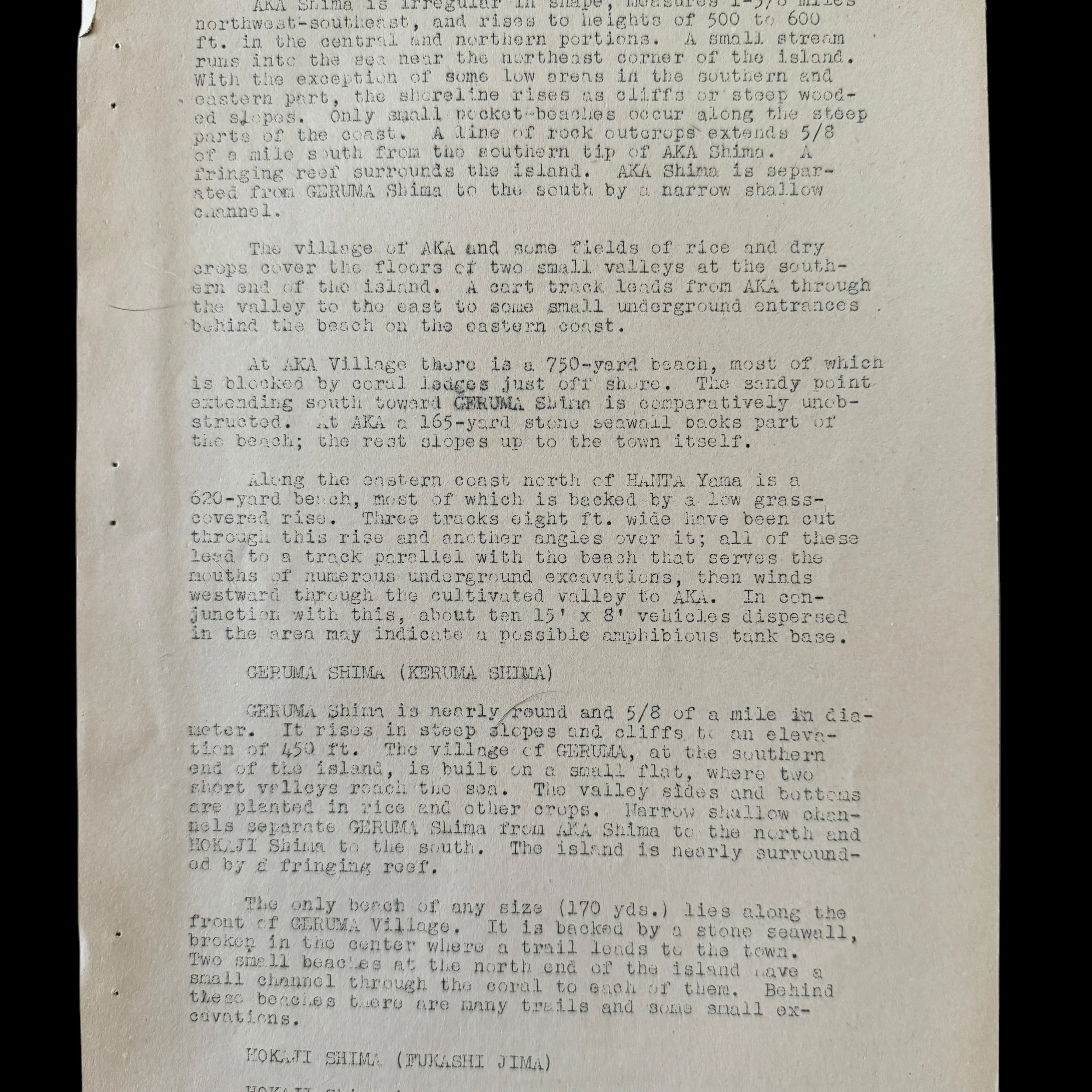
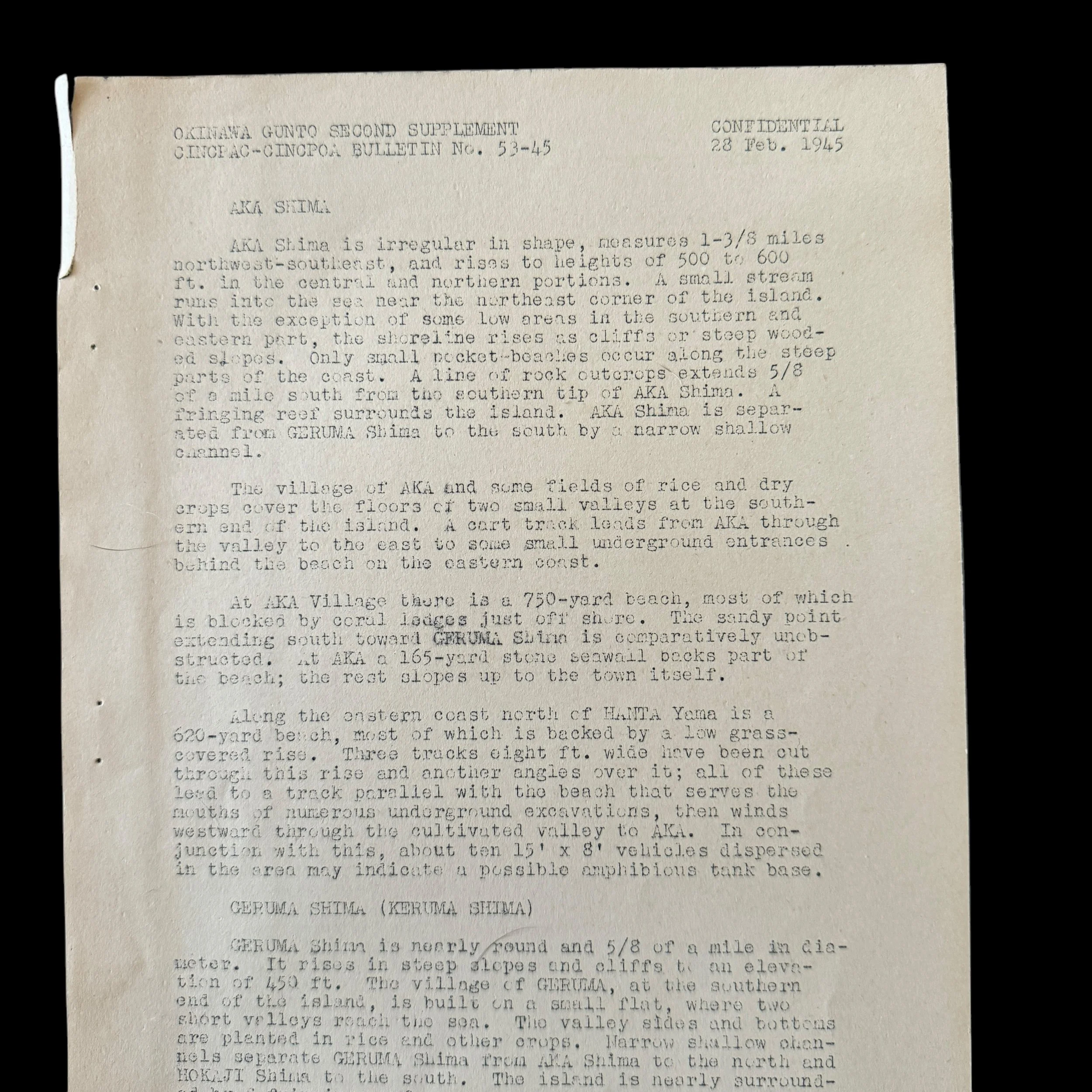

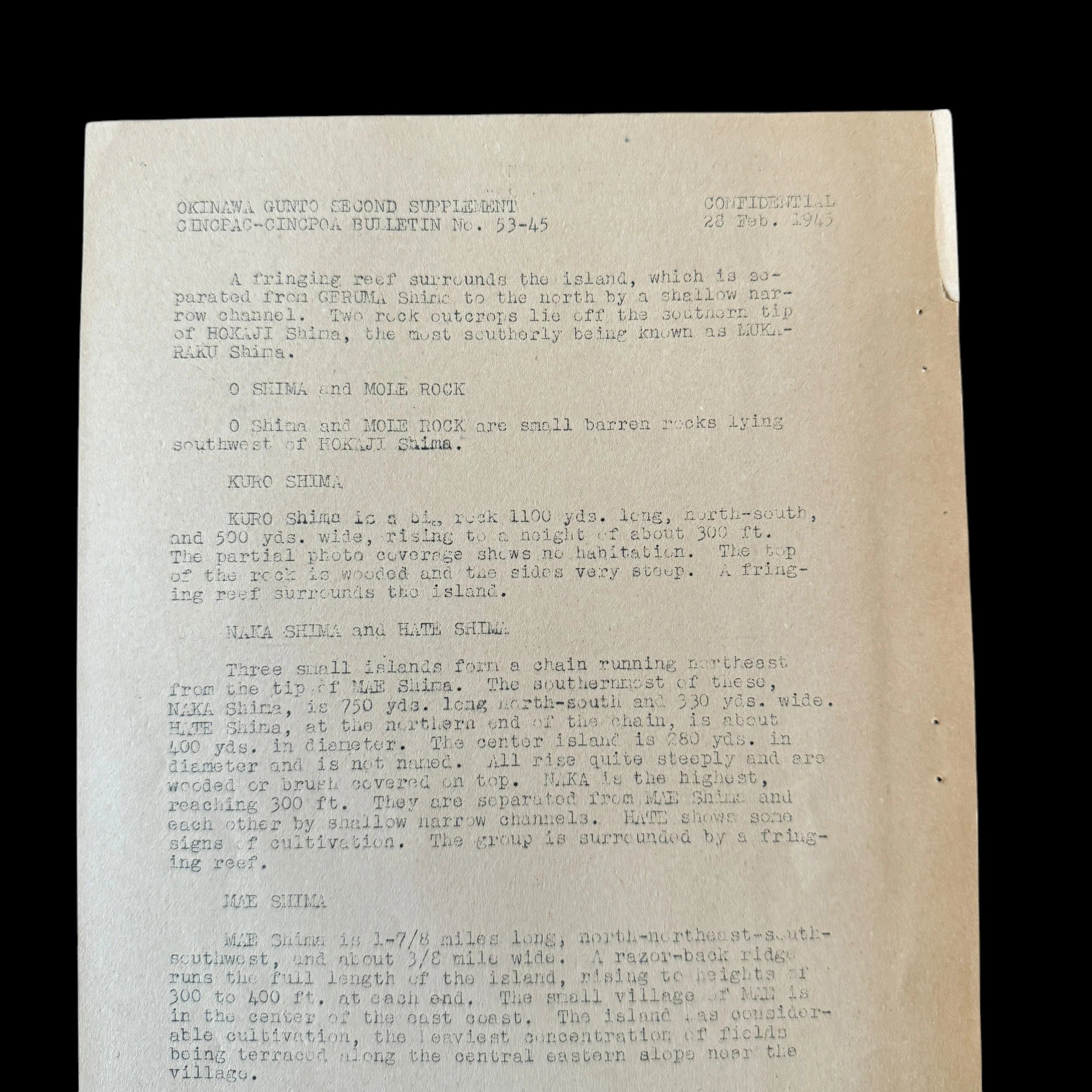
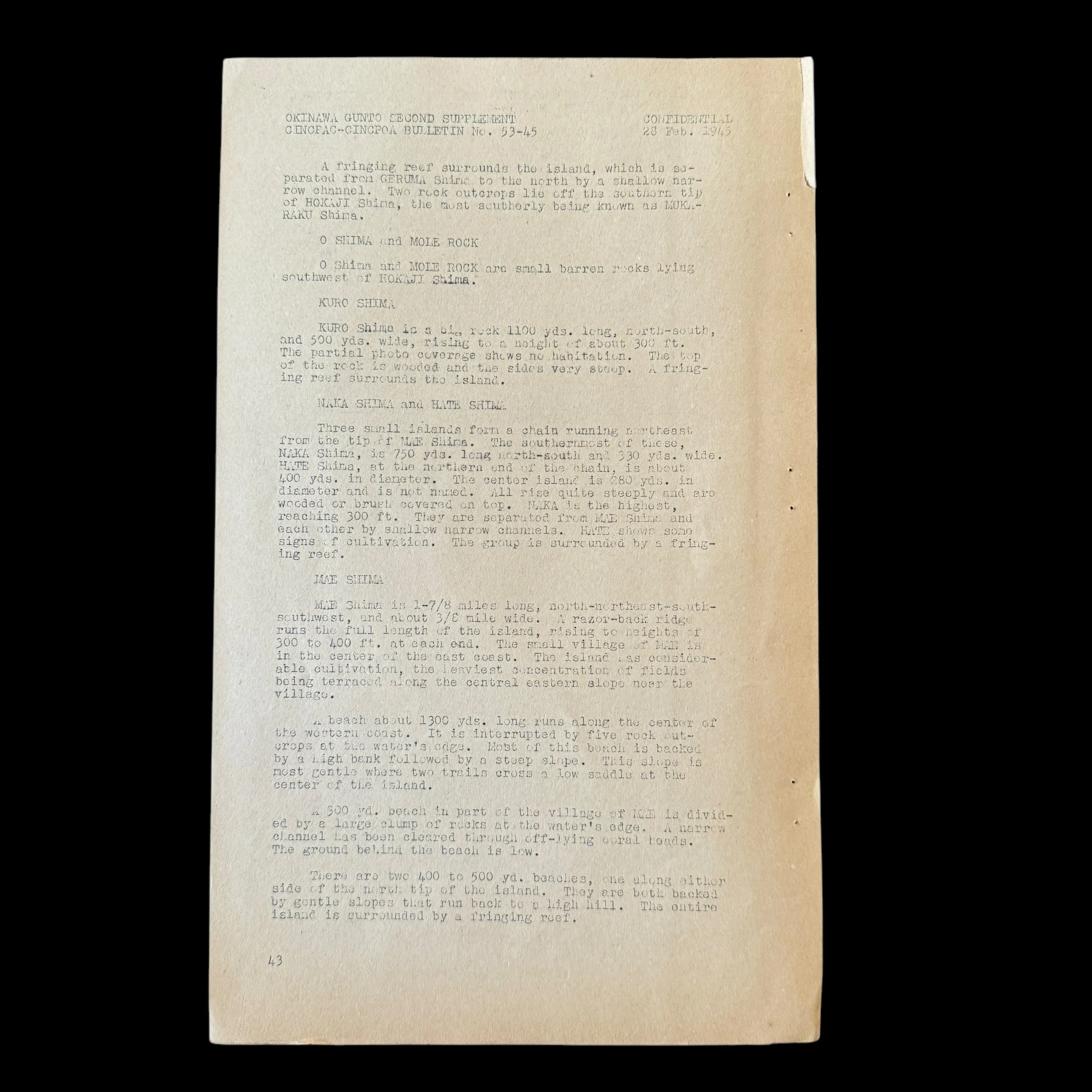
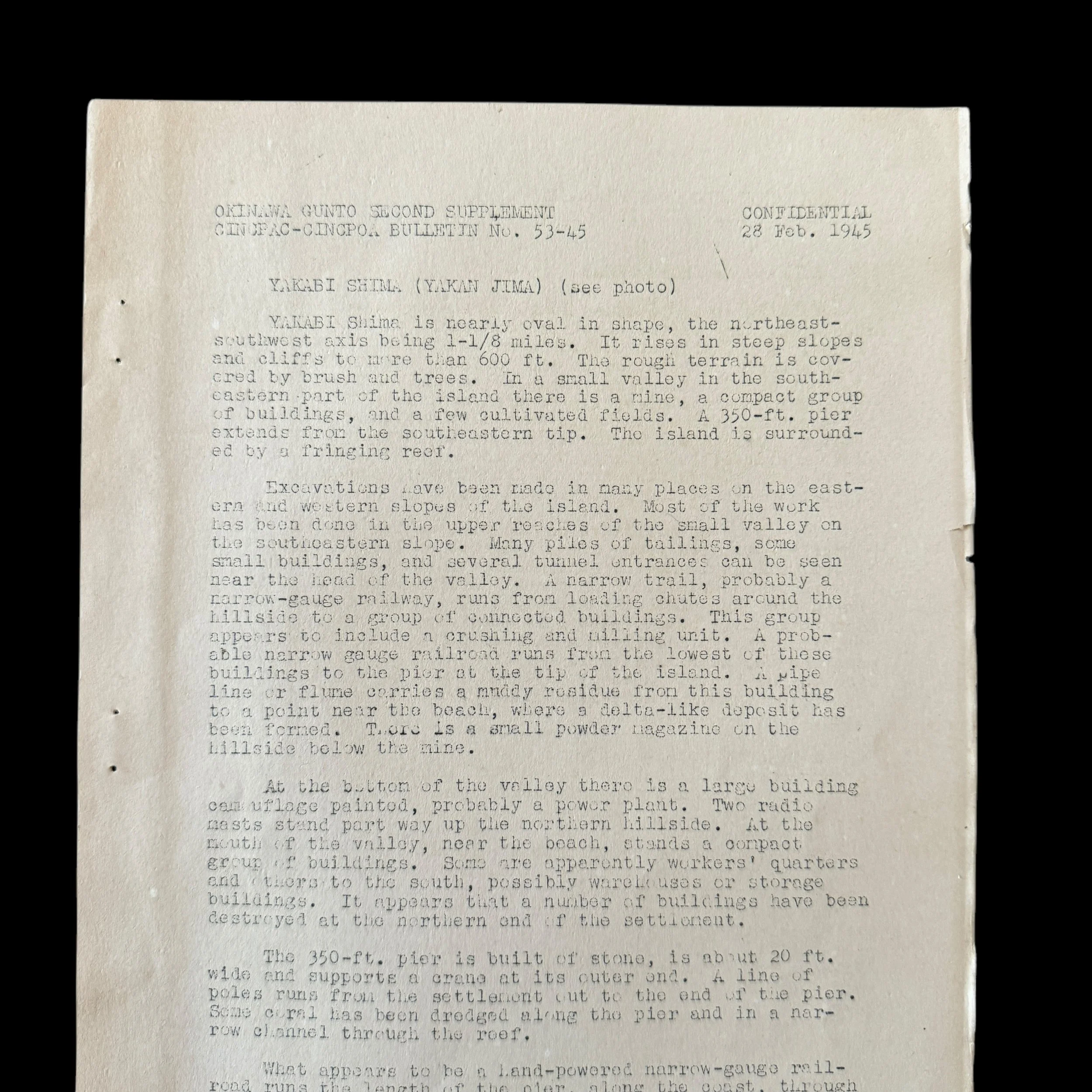
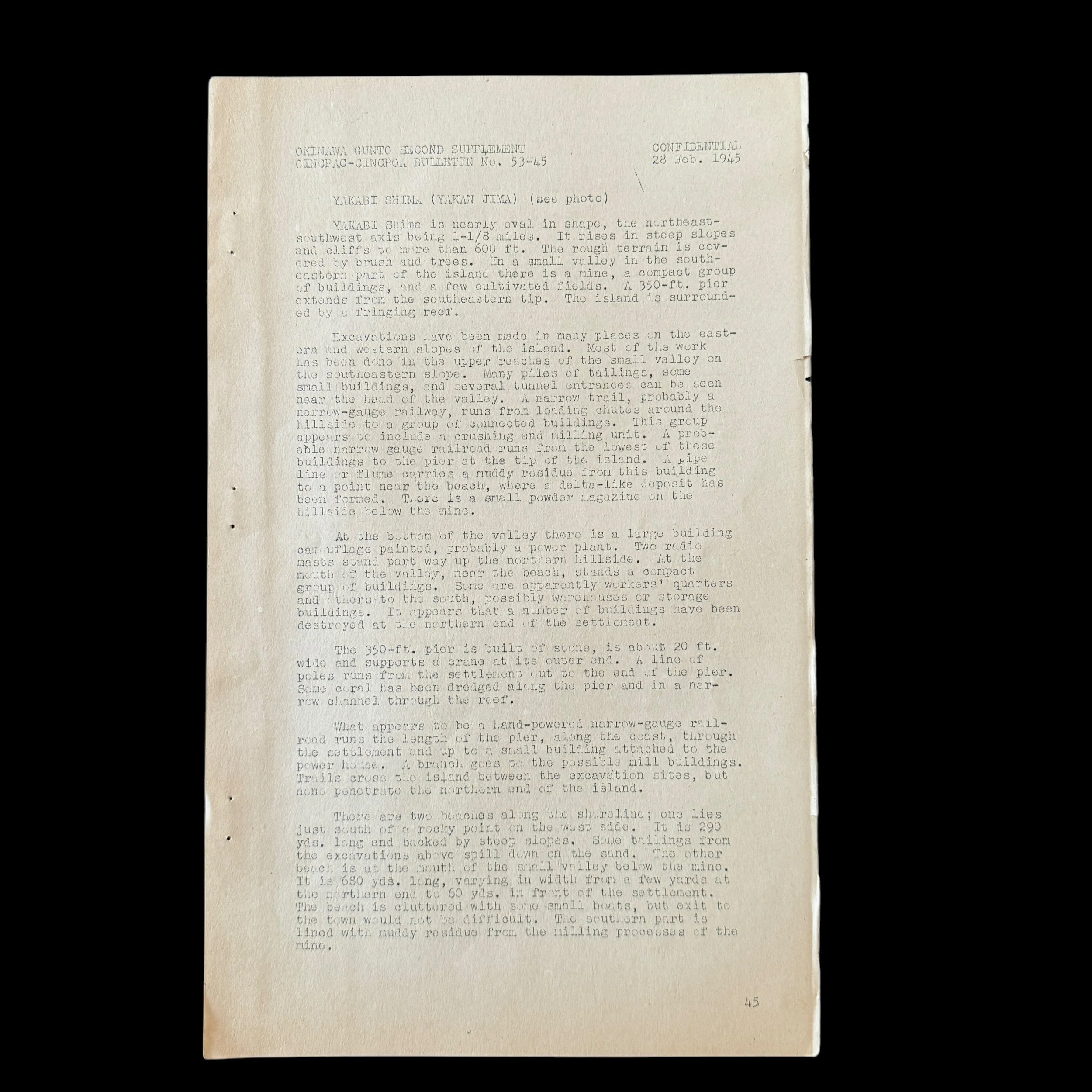




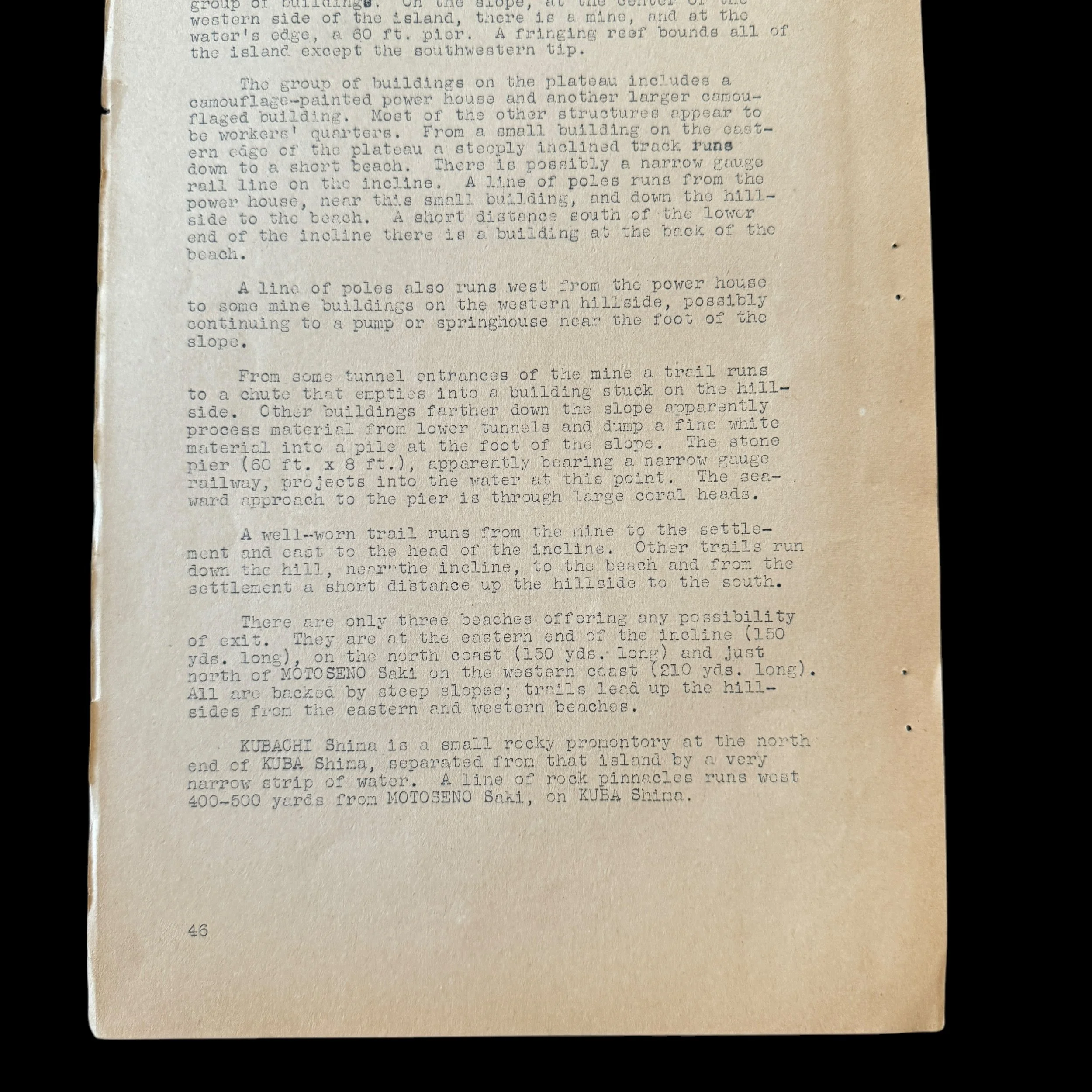
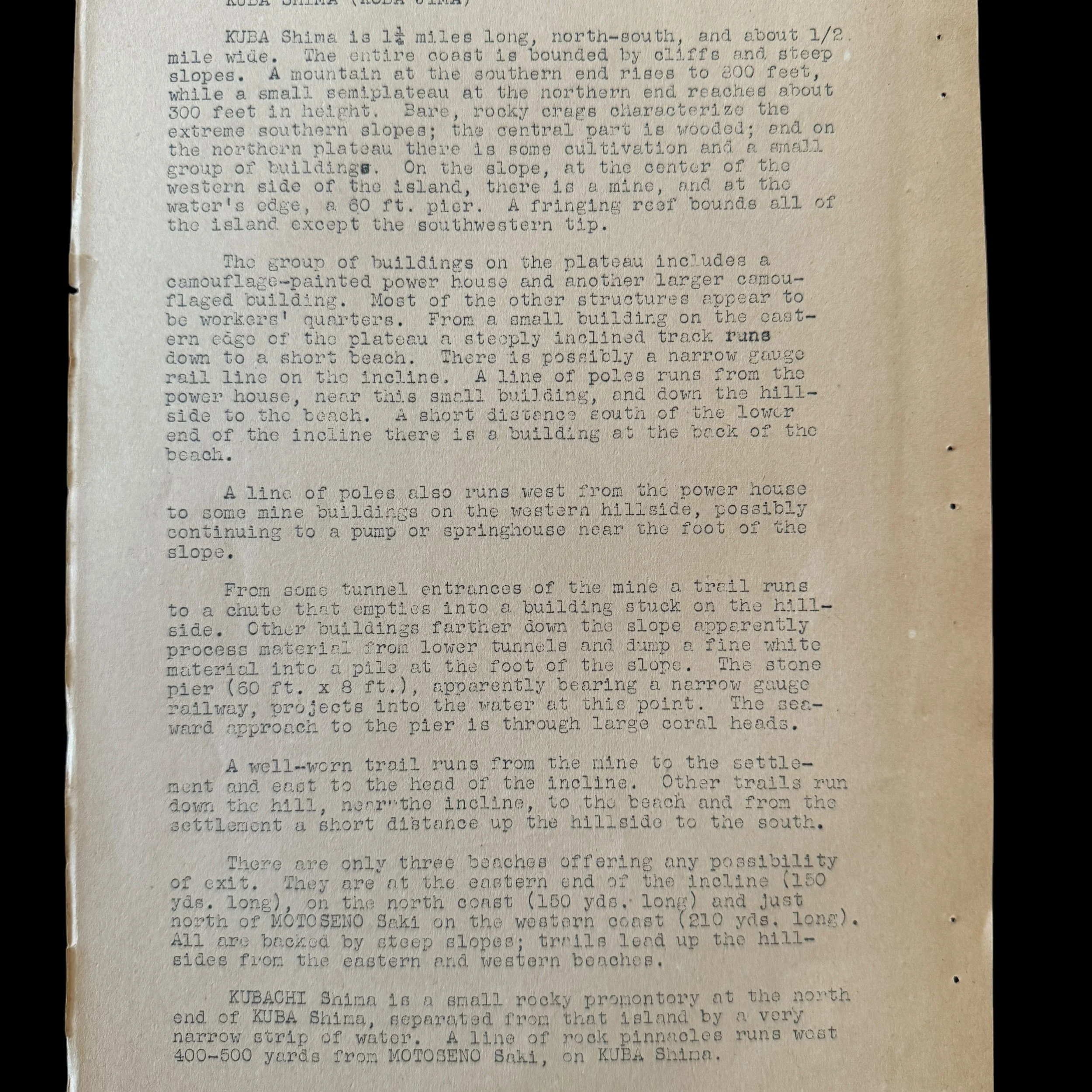

RARE! WWII 1945 Original World War II “Headquarters of the Commander in Chief - U.S. Pacific Fleet” CONFIDENTIAL Operation Iceberg Okinawa Gunto Invasion Bulletin (Shuri Town and Surrounding Islands)
Comes with hand-signed C.O.A. and a full historical write-up
Type: Original World War II “Headquarters of the Commander in Chief - U.S. Pacific Fleet” CONFIDENTIAL Operation Iceberg Okinawa Gunto Invasion Bulletin
Subject: Estimated Japanese Disposition - Kerama Retto, Yakan, Tokashiki Shima, Shuri Town, Gabi Shima, Amuro Shima, Mae Shima, Aka Shima, Yakabi Shima, etc.
Campaign: Pacific Theater
Dated: Feb. 1945
Pages: 5 (double-sided) = 10 pages total
This rare, museum-grade World War II artifact is an original"Headquarters of the Commander in Chief - U.S. Pacific Fleet" CONFIDENTIAL Operation Iceberg Okinawa Gunto Invasion Bulletin.Produced in extremely limited numbers—fewer than 500 copies produced in 1945—these highly classified bulletins were reserved exclusively for the highest-ranking generals, officers, and intelligence officials directly involved in planning and executing the Okinawa campaign in April 1945.
Operation Iceberg, the largest amphibious assault in the Pacific Theater, required an unprecedented level of preparation and intelligence gathering. This invasion bulletin exemplifies the meticulous planning that defined the campaign, containing detailed intelligence on Japanese defensive positions and the expected strategy for Okinawa and nearby Ie Shima.
The bulletin underscores the gravity of the operation, as Okinawa was strategically critical for its proximity to the Japanese mainland. This document served as a cornerstone for the Allied effort, guiding military leaders in orchestrating the assault, which would become one of the bloodiest and most consequential battles of World War II.
Today, this artifact stands as a testament to the complexity and scale of wartime planning, offering a rare glimpse into the intelligence and strategy that shaped one of the most pivotal moments of the Pacific campaign. Its historical significance and rarity make it a treasured piece of World War II history, capturing the monumental effort behind the Allied push toward victory.
The Battle of Okinawa: Estimated Japanese Dispositions and Targets
TheBattle of Okinawa, fought between April 1 and June 22, 1945, was one of the largest and bloodiest campaigns of World War II. It involved a massive amphibious assault by Allied forces aiming to capture the island as a strategic base for the eventual invasion of Japan. The battle encompassed not just Okinawa but also its surrounding islands, which served as critical targets due to their defensive positions, logistical value, and strategic importance. Islands such asKerama Retto,Tokashiki Shima,Amuro Shima,Mae Shima,Aka Shima, and others played significant roles in the Japanese defensive strategy and became key objectives for Allied forces.
1. Kerama Retto
Strategic Importance:
TheKerama Retto(a group of small islands west of Okinawa) was critical for its proximity to the main island and its potential use as an anchorage for Allied naval forces. It was targeted early in the campaign to secure a staging area for amphibious operations and to deny its use to the Japanese.
Japanese Dispositions:
Japanese forces on Kerama Retto consisted of small garrisons, including units of the3rd Special Base Force, numbering around500–1,000 troops.
The Japanese utilized caves, cliffs, and rugged terrain to create defensive positions. Many of these caves were fortified and interconnected to enable prolonged resistance.
Kerama Retto was also a staging point forsuicide boats—small, explosive-laden vessels intended to ram Allied ships.
Allied Operations:
The islands were assaulted by U.S. forces onMarch 26, 1945, days before the main landings on Okinawa.
Despite fierce resistance, the islands were quickly secured, providing a safe harbor for damaged ships and a staging area for subsequent operations.
2. Tokashiki Shima
Strategic Importance:
Located southwest of Okinawa,Tokashiki Shimawas another vital target for its potential use as a base for Japanese kamikaze operations and as a logistical hub.
Japanese Dispositions:
The island was defended by elements of the62nd Division, reinforced by local militia and civilian conscripts.
Defensive preparations included fortified caves, trenches, and concealed artillery positions.
Civilian Involvement:
Tragically, the Japanese military coerced civilians on Tokashiki Shima into mass suicides, falsely claiming that Allied forces would torture or kill them. This propaganda led to one of the most harrowing civilian tragedies of the campaign.
Allied Operations:
U.S. forces secured the island with relatively light resistance, though the civilian toll highlighted the psychological warfare tactics employed by the Japanese.
3. Amuro Shima
Strategic Importance:
Amuro Shima, located near the Kerama Retto, served as a defensive outpost and an observation point for Japanese forces.
Japanese Dispositions:
The island’s small garrison was tasked with monitoring Allied naval movements and defending the approaches to the Kerama Retto and Okinawa.
Defensive structures included observation posts, machine-gun nests, and concealed artillery emplacements.
Allied Operations:
The island was swiftly taken by U.S. forces as part of their initial operations to secure the Kerama Retto, ensuring that Japanese forces could not use it for reconnaissance or harassment.
4. Mae Shima
Strategic Importance:
Mae Shimawas strategically located near key naval routes, making it an ideal target for Allied forces to secure control of maritime approaches to Okinawa.
Japanese Dispositions:
The island was lightly defended by a small contingent of troops, with limited fortifications due to its smaller size and reduced strategic significance compared to larger islands.
Allied Operations:
Mae Shima was quickly captured and repurposed by Allied forces for logistical support, aiding the broader campaign against Okinawa.
5. Aka Shima
Strategic Importance:
Aka Shima, part of the Kerama Retto, was targeted for its proximity to Okinawa and its potential as a base for staging kamikaze or suicide boat operations.
Japanese Dispositions:
The garrison on Aka Shima consisted of a few hundred troops, augmented by civilian laborers.
Defensive measures included camouflaged positions and cave fortifications.
Allied Operations:
Allied forces encountered stiff but brief resistance, quickly overwhelming the defenders and securing the island for use as a staging ground.
6. Yakabi Shima
Strategic Importance:
Yakabi Shima, another island within the Kerama Retto, held strategic value for its geographic location and its potential to support Japanese defensive operations on Okinawa.
Japanese Dispositions:
Like Aka Shima, Yakabi Shima was lightly defended, with a small garrison focused on observation and delaying tactics.
The Japanese utilized natural terrain features to enhance their defensive positions.
Allied Operations:
The island was secured without significant difficulty, further solidifying Allied control over the Kerama Retto.
7. Shuri Town
Strategic Importance:
Shuri Town, located in southern Okinawa, was the centerpiece of the Japanese defense. It served as the command center for General Mitsuru Ushijima and the32nd Army.
Japanese Dispositions:
Shuri was integrated into theShuri Line, a complex network of fortifications, tunnels, and caves. The town itself became a fortress, with buildings converted into strongholds and underground command bunkers.
Artillery emplacements and machine-gun positions were strategically placed to cover the approaches to Shuri.
Allied Operations:
Shuri Town was subjected to relentless bombardment by artillery, naval gunfire, and aerial strikes before ground forces engaged in intense urban combat.
The capture of Shuri marked a significant turning point in the battle, signaling the collapse of the primary Japanese defensive line.
8. Gabi Shima
Strategic Importance:
Gabi Shima, a smaller island in the Okinawa region, was primarily important as a potential observation and logistics point.
Japanese Dispositions:
The Japanese maintained a small defensive presence, with limited fortifications focused on observation and harassment.
Allied Operations:
The island was captured as part of the broader effort to secure the outlying islands around Okinawa, ensuring that Japanese forces could not use it to monitor or disrupt Allied operations.